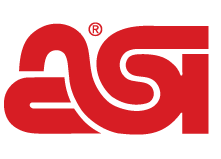Cybersecurity
The industry’s increasing digitalization makes it vulnerable while attacks are on the rise.
Current Snapshot: Cybersecurity has become a paramount concern for promo. About 90% of distributors and 80% of suppliers say they’re worried about cybersecurity/ransomware attacks – and with reason. Hackers have already targeted about a quarter of distributors and suppliers with ransomware/cyber assaults, SOI research shows. (Over 40% of the largest distributors and suppliers have been attacked.) There’ve been breaches that have crippled operations for industry firms large and small. In some cases, companies have paid ransoms to have systems restored.
Short-Term Prognosis: The threat of a business-hobbling cyber breach is expected to intensify in promo and other industries. In 2024, the global average cost of a data breach rose about 10% to $4.88 million, the highest ever, according to IBM. Some analysts anticipate the average cost will spike another 10% in 2025. Meanwhile, attacks may be increasing, too. According to an analysis from cybersecurity firm Cyble, U.S. ransomware attacks soared nearly 150% year over year in the first five weeks of 2025.
Some promo executives think the industry is increasingly vulnerable. Dilip Bhavnani, chief operating officer at Counselor Top 40 supplier Sunscope (asi/90075), says factors like promo’s increased digitalization, supply chain vulnerabilities, limited cybersecurity investment by some players (exacerbated by rising costs and slowing sales) and the rise in the risk of AI-powered threats all make the merch market more susceptible to breaches. “The risk and frequency of cyberattacks will definitely rise,” Bhavnani predicts.
We asked distributors and suppliers: “Has your company ever been the target of ransomware or a cyberattack?”
(Hover over the pie charts for details)
Distributors
Suppliers
Promo Companies That Suffered an Attack
Long-Term Forecast: Unfortunately, promo leaders say the perils digital criminals pose to legitimate businesses will likely remain pervasive for the foreseeable future. At the 2024 ASI Power Summit, industry executives acknowledged in a panel discussion that large portions of their information technology budgets go toward protecting their companies against incursions by hackers. Industry pros anticipate the heavy investment will continue for those firms, while necessity compels others to strengthen their digital bulwarking. “Companies will almost certainly need to increase their cybersecurity investments in the years ahead,” says Bhavnani.
To reduce the potential of falling prey to a cyberattack, Bhavnani and other promo C-Suiters say industry firms should: educate and train employees about phishing scams and the basics of cybersecurity, strengthen access controls through steps that include enforcing multi-factor authentication across all platforms, invest in tools like anti-malware software for all devices, secure customer/order data, properly vet third-party vendors with access to one’s business systems, invest in cyber insurance and perform regular safety audits.
“Protecting your promo business from cyberthreats is essential,” says Bhavnani, “especially as our industry becomes more digital and interconnected.” – CR
M&A
Volatility will slow down the deal-making – but only temporarily.
Current Snapshot: 2024 marked one of the most momentous years ever for merger and acquisition activity in promo. There were international acquisitions by U.S.-based promo distributors, a bevy of domestic deals and multiple blockbuster M&As involving one Counselor Top 40 firm buying another, including multibillion-dollar S&S Activewear (asi/84358) purchasing fellow billion-dollar player alphabroder (asi/34063).
The dealmaking continued in early 2025, with notable acquisitions including private equity firm Mill Point Capital acquiring Counselor Top 40 supplier Koozie Group (asi/40480) to combine the Florida-headquartered company with Garyline (asi/55990) – a Counselor Top 40 supplier Mill Point already owned.
Distributors
Likely To Sell Company
Likely To Acquire Company
Short-Term Prognosis: Even so, dealmaking on the whole may be more muted in 2025. Data from Dealogic showed that global M&A in April reached its lowest level in more than 20 years, while U.S. M&A across all industries was the weakest it had been since the financial crisis in 2009. Uncertainty related to a trade war, marketplace volatility and potential recession – along with declining industry sales – could cause M&A to slow in the promo industry.
“In light of economic uncertainty, I anticipate a slight slowdown in promo M&A in the second half of the year,” says Joseph Sommer, CEO of Whitestone (asi/359741), a Counselor Best Place to Work distributor that made three acquisitions between July 2024 and January 2025. “Sellers typically look to exit during periods of growth. Buyers tend to act from a place of confidence. Many are waiting to see how things shake out.”
Suppliers
Likely To Sell Company
Likely To Acquire Company
Long-Term Forecast: While M&A activity may cool this year, deals will persist in the next few. Foundational, industry-specific drivers remain in play, including an aging ownership class looking to retire, growing private equity investment in the market, and increasingly complex and expensive technology requirements. “There’s too much generational change happening, and too many pressures facing small-business owners, for M&A not to be a central part of the industry’s future,” Sommer asserts.
As a result, the largest distributors and suppliers especially (that are often well-capitalized) will continue to acquire smaller companies and equally sized competitors. Still, industry executives believe the merch space won’t be consolidated to just a select handful of businesses. “Promo remains accessible – there’s a low barrier to entry and high potential for entrepreneurial success,” says Sommer. “I don’t see full consolidation taking hold.” – CR
Sustainability
Rising costs and legislative pressures are nipping at this industry-wide movement.
Current Snapshot: The environmental movement has been around for decades – Earth Day itself is more than half a century old – but the business case for sustainability has waxed and waned over the years, often getting put on the back burner during tough financial times. In the 2020s, however, end-buyer and consumer demand for data-backed, third-party certified efforts to lower products’ impact spiked. “Clients are constantly asking for solutions that are better for our planet,” says Kris Robinson, co-founder of Jackalope | The Kreative Lure (asi/233246) and a member of the ASI Promo for the Planet advisory board. “Budgets are being based around the demand and needs of these sustainable ideas and projects.”
We asked: “In 2024, did clients ask for more environmentally friendly products?” (% of respondents who said yes)
Distributors
Suppliers
Short-Term Prognosis: So far, 2025 has been a volatile year for sustainability. The Trump administration has rolled back clean air and water protections and proposed deep staffing and budget cuts to the Environmental Protection Agency (EPA). EPA Administrator Lee Zeldin announced plans to slash the agency’s budget by 65% in coming years. Add to that ongoing economic instability and a shifting tariff strategy. “Our sustainability projects haven’t gone away, but are now competing for time and attention as we react to the changing tariff landscape,” says Kate Nash, director of business development and promotional sales at B Corp-certified supplier Raining Rose (asi/80489) and also a member of the Promo for the Planet board. “Companies that were already committed to these efforts will stay committed, but efforts might slow as distractions increase.”
Percentage of Companies Who Received Sustainability Credential Inquiries From Clients & Prospects
Long-Term Forecast: Despite the immediate challenges, don’t expect corporate commitment to environmental and social responsibility to disappear, especially with new sustainability-focused regulations coming from individual states and migrating from Europe. In promo, suppliers, distributors and their customers have become more sophisticated about identifying greenwashing and throwing support behind next-generation sustainability initiatives. In the future, we’ll “shift from a surface-level reliance on certifications to circularity and out-of-the-box solutions like reusing, upcycling and exploring other waste alternatives,” says Promo for the Planet Advisory Board Member Lindsey Cole, director of marketing and communications at Ethix Merch (asi/189731). “As we research and learn more about waste, specifically in our industry, we can provide more effective solutions. We may see more advanced traceability technology so consumers will have access to supply chain transparency without paying much more.” – TH

Promo for the Planet is your destination for the latest news, biggest trends and best ideas to help build a more sustainable and socially-responsible industry.
AI
The hot technology of tomorrow can lead to efficiencies today for those who can best optimize it.
Current Snapshot: ChatGPT launched in late 2022, ushering in the era of artificial intelligence, with competitors scrambling to infuse their own versions of the technology into everything from search engines to graphic design programs. In a few short years, generative AI has reshaped the business world, with workers using it for things like note-taking, crafting creative copy and business proposals, and generating or enhancing imagery. “The biggest use case in the promo industry today is personal productivity,” says Jon Norris, chief strategy officer at Counselor Top 40 supplier Hit Promotional Products (asi/61125). “Where the industry is struggling is how do you then flip the personal gains of AI into corporate workflows? That’s the biggest jump.”
Percentage of Companies That Use AI
Distributors
Suppliers
Short-Term Prognosis: Usage of AI will continue to grow, especially given the technology’s affordability already. The challenge at hand is backward engineering AI systems into legacy tech models – without compromising data security, Norris says. “Right now, people are willy-nilly uploading their financials to ChatGPT and asking it to do an analysis,” he says. In doing so, they’ve “just uploaded company data to something that’s going to use it to enrich itself and add to its global skillset.” To avoid just such potentially fraught scenarios, Hit has been working on creating a private AI instance trained on its own company data and integrated into its workflow, Norris says, adding that the supplier has aggressive goals to automate a significant portion of order entry using AI this year.
Most Common Uses of AI
Distributors
Suppliers
Long-Term Forecast: The next forefront will be agentic AI. “The future is AI interacting with AI,” Norris says. These job-function agents will be able to understand a goal a company is trying to achieve, create steps to make it happen, then assign chunks to other AI agents to carry them out, according to Isar Meitis, CEO of Multiplai and a speaker at the 2024 ASI Power Summit. Norris isn’t worried, however, about AI agents gutting the human workforce. “Instead of downsizing jobs, it’s going to upscale skillsets,” letting us “use our human brains for the complex problems,” he says. Another possible outcome from the proliferation of AI? A renewed emphasis on things you can touch and see in the real world. “When we’ve accepted that most everything online is AI-driven and generated, there might be a whiplash effect that drives more value to the tangibles of physical goods,” Norris speculates. – TH

ESP+ is leveraging the power of AI to create proposals in seconds as well as personalized notes, email copy and product summaries that are completely unique to your client. Visit asicentral.com/technology to learn more.
